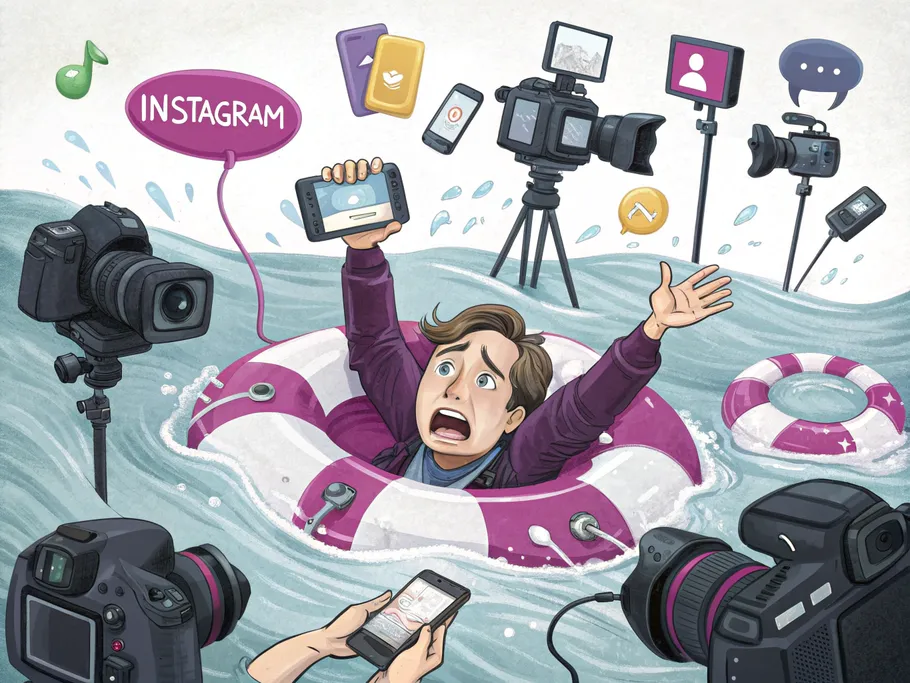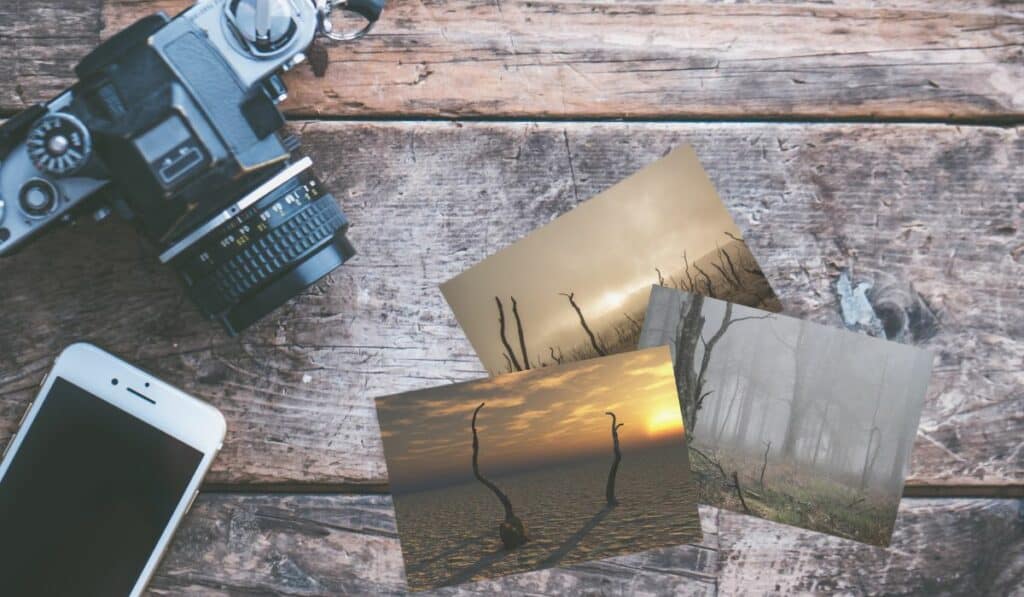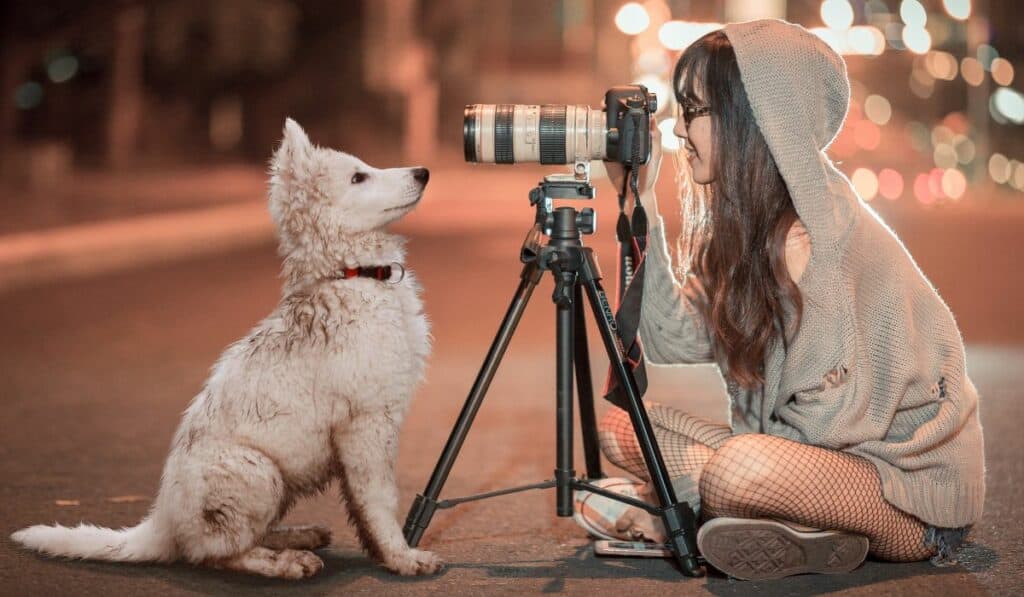Camera vs Phone: How to Take High-Quality Instagram Content


Ah, the age-old question that haunts every aspiring creator in their quest for Instagram glory: Should you shoot with a fancy-pants professional camera or the trusty phone in your pocket?
Let's be brutally honest. There’s no single right answer. The best tool for the job is the one that actually gets the job done for your specific goals. It’s a classic case of weighing the pros and cons before you blow your budget.
So, let's cut through the noise and figure out what you really need to create killer high-quality Instagram content.
For anyone dipping their toes into their influencer career, the debate over a phone camera vs. professional camera is a distraction. If you're just starting out, the answer is simple: use your phone.

Seriously. You’re new to this. You need to figure out your voice, your niche, and your content style. The last thing you need is the technical headache of a DSLR you don't know how to use.
Once you've built a solid following, brands start sliding into your DMs for paid partnerships, and you're ready to level up, then—and only then—is investing in a professional camera a smart move. But that's just the beginning. Let's dig deeper.
The first question to ask is about your end goal. If you're a personal trainer sharing daily workout routines or a foodie documenting your kitchen experiments, a smartphone is your best friend. It feels authentic, relatable, and raw. Your followers want to see the real you, not a perfectly staged, glossy ad.
However, if you're building a business account, the game changes. While the belief that you must use a DSLR is a bit dated, the need for crisp, professional images remains. High-quality visuals are non-negotiable for grabbing a client's attention because they reflect your brand's quality.
For example, if you're marketing a concept hotel, your phone might not capture the intricate details and ambiance that make the space special. In this case, poor image quality can devalue your brand and send the wrong message.
That said, modern smartphone cameras are absolute powerhouses. With advancements in computational photography, devices like the latest iPhones and Samsung Galaxies can produce stunning images that often rival DSLRs. The convenience is also unmatched—you can shoot, edit, and post from a single device, which is a massive workflow advantage.
Alright, let's get straight to the point. If a brand is paying you money to create content, you use a professional camera. End of story.
Don't even think about using your phone for a paid brand shoot. When a company hires you, they're not just paying for your audience; they're paying for your expertise and your gear. They expect professional, high-quality Instagram content that they couldn't create themselves.
Imagine you're working with a clothing brand. They need you to take stunning pictures of their clothes for Instagram that will be featured on both your accounts. Showing up with just your phone is like a professional chef showing up to a Michelin-star kitchen with an Easy-Bake Oven. It screams amateur.

The more a brand pays you, the higher their expectations. Delivering polished, professional work isn't just about the final image; it's an act of professionalism that justifies your rates and builds your reputation.
Here’s a little secret: the camera doesn't make the photographer. Your skill, your eye for composition, and your understanding of light are infinitely more important than the gear in your hands.
It’s a gentle reminder that often, our own skill and effort matter more than the tools we have. This perspective can bring a quiet strength, knowing that what you cultivate within yourself holds true value. Keep nurturing your abilities; they are your most powerful asset.
That's why someone with great photography tips for instagram can take a breathtaking photo with a phone, while someone with no skill can take a mediocre shot with a $5,000 DSLR. Whether you're taking Instagram photos of yourself or shooting for others, your knowledge is what creates magic.
Of course, this doesn't mean any old phone will do. To truly master how to take photos for Instagram with a phone, you need to:
Instagram Stories are fleeting, disappearing after 24 hours. For the most part, they are the home of raw, imperfect, and in-the-moment content. For this, your smartphone is not just sufficient; it's ideal. It’s handy, practical, and lets you share moments instantly.
Just make sure you have decent lighting for your Instagram content, because nobody wants to watch a grainy, dark video, no matter how authentic it is.
However, if you're using Instagram Stories for business as a core part of your marketing strategy, you might want to bring out the big guns. Polished, high-quality Stories can be saved to your Highlights, acting as a permanent portfolio on your profile. For these, taking the time to set up a perfect shot with a DSLR and using editing apps like VSCO, Snapseed, or Lightroom can make all the difference.

So, after all that, what’s the final word on the great phone camera vs. professional camera debate?
There isn’t one. Sorry, not sorry.
There’s no absolute, one-size-fits-all answer. Both professional cameras and the phone you're probably reading this on have their strengths and weaknesses. It can feel overwhelming trying to find the "best" way, but what truly matters is finding what feels right for you and your journey. Trust that your personal needs are the best guide.
Before you make a choice, here’s a quick recap of the questions you need to answer for yourself:
While these strategies are proven to work, every account is unique. Get a personalized audit that analyzes your specific account data and provides tailored recommendations for growth and monetization.